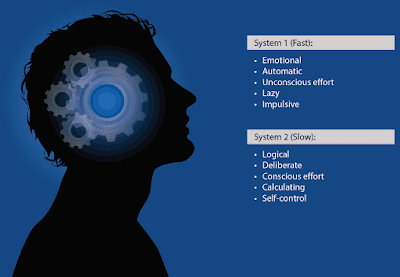Human nature refers to the general psychological characteristics, feelings, and behavioral traits shared by all humans. Consider Jason, who came to aviation because he wanted to participate more actively in another realm of his business. Derek needs to capitalize on this motivation to keep Jason interested in the step-by-step procedures that need to be learned in order to fly safely. There is a gap between Jason and his goal of earning a pilot certificate. It is Derek’s job to close the gap. The successful instructor channels learner motivation and guides the learner toward the goal of obtaining aviation skills through education, experience, practice, and study.
The psychologist and Nobel Prize winner in Economics, Daniel Kahneman, summarized his findings of human behavior in his book titled, Thinking, Fast and Slow. Simply, he outlines that two systems of thought constantly compete for control over our behaviors that affect decision-making. The first system (fast) is the automatic reaction that individuals have developed through memory and experience. The second system (slow) relies on logic and reasoning to draw conclusions for the actions one takes. [Figure]
 |
| Daniel Kahneman developed a two-system view of human behaviors that affect decision-making: System 1 (fast) represents the automatic responses, while System 2 (slow) represents the more logical and deliberate considerations used for decision-making |
According to Kahneman’s research, System 1 is primarily based in emotion and the unconscious mind. These are automatic “gut reactions” that require little thought or effort by the individual. For example, when presented with the simple math equation 2 + 2 = x, the individual can easily solve the problem where x = 4. The response is instant and likely correct in this example. The inherent risk in using this thought system is that, as Kahneman explains, we are inherently lazy. It is exhausting to put forth the effort required to deliberately concentrate on a problem, especially one that appears to be so easy. This can lead to poor decision-making due to the assumption that the task at hand is as simple as past, similar, experiences suggest it to be.
